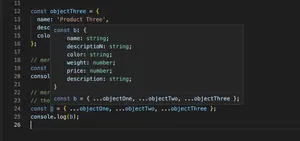Introduction
In TypeScript, the any type is a powerful escape hatch, granting developers the flexibility to bypass the compiler’s static type checking. This article will serve as a guide to understanding and using the any type responsibly, with practical examples progressing from basic usage to more advanced scenarios.
What is the ‘any’ Type?
TypeScript’s any type is the most permissive type, allowing for any form of JavaScript value to be assigned to it without causing compilation errors. It’s often used when the type of a variable cannot be known at the time of writing the code or to opt-out of type-checking temporarily.
let mysteriousValue: any = "This could be anything";
mysteriousValue = 42; // No error
mysteriousValue = true; // Still no error
Although useful, extensive use of any desn’t take full advantage of TypeScript’s type-checking system.
When to Use ‘any’
Despite TypeScript’s power to guard against type mismatches, there are legitimate cases to use the any type. For example, when dealing with third-party libraries without type definitions or while migrating a JavaScript project to TypeScript.
Weakening Type Safety
There is a trade-off between the flexibility that any introduces and the strength of TypeScript’s type-system. Careless usage of any could potentially weaken the robustness of the application.
Avoiding Overuse of ‘any’
Minimizing the use of any ensures that you’re still covered by the safety net provided by TypeScript. Where possible, it’s recommended to use unknown, never, or a union type as a safer alternative.
Replacing ‘any’ with ‘unknown’
unknown is more restrictive than any, and forces developers to implement type-checking before operating on the value.
let uncertainValue: unknown = "A string, perhaps?";
// TypeScript will error here, urging you to ensure the type.
if (typeof uncertainValue === 'string') {
uncertainValue.trim(); // It's safe now.
}
Advanced Usage of ‘any’
For seasoned developers, any can be a useful escape when dealing with complex or untyped code. However, such use cases should come with clear documentation and appropriate type-checks where necessary.
Dealing with Nested Object Structures
In dealing with deep nested objects, especially when deserializing complex JSON data without a predefined interface, any can be a temporary solution.
let complexObject: any = getComplexJson();
// You have the freedom to dive into the structure.
let nestedValue = complexObject.some.deeply.nested.field;
However, defining the types or interfaces is still the best approach for maintainability and safety.
TypeScript and any in Practice
In real-world applications, gradually phasing out any in favor of accurate type annotations is a best practice. With incremental typing, you can start with any and refine your types as your application evolves.
Conclusion
This exploration into the ‘any’ type in TypeScript has demonstrated both its flexibility and its pitfalls. Prudent use of any can aid development without sacrificing the integrity of your types. Remember that every ‘any’ in your code base represents potential runtime bugs, so use it judiciously and in moderation.
